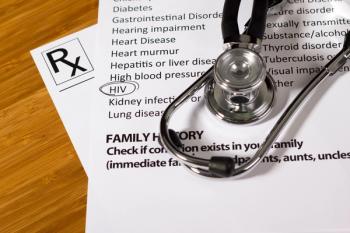
Hurricane Ike: One pharmacist's report from the eye of the storm
Jim Plagakis reports on what it was like to go through Hurricane Ike in Galveston.
Key Points
Thirty-six hours after the eye of Hurricane Ike passed over my home, I got a call on my cell from a pharmacist co-worker. He asked, "Are you and your family safe?"
"So you were smart and decided to get away from the island," he said.
But Ike quit its northeast movement and Galveston remained right in the crosshairs. Then came the official word, during the early morning of Sept. 12. We heard a stern, drill-sergeant voice use the words "death," "surge," and "certain" all in the same sentence.
My co-worker continued, "I just want to remind you, Jim, that we switched shifts on Tuesday. You work late."
"Do you really expect the drugstore to be open on Tuesday?" I asked.
Hurricane Ike was a monster with an area almost the size of the state of Texas. It barreled into Galveston full force. In 1900, the storm surge was 23 feet, but we now have the seawall built in 1902.
The drugstore did not open that Tuesday.
Sept. 18, five days after the storm hit, I spoke with my co-worker. He was working. "I just picked one of the open stores in this area and went to work. You could too."
"I'm three hours away," I said and added, "You picked? What about the scheduler?"
"They said it was my choice. I would be paid whether I worked or not."
Hmmm! That sounds like a way to get loyal employees. Hurricane or not, lives have to be lived. Bills have to be paid. Babies have to be fed. Family members need dental care.
I would have bet that either Walgreens or CVS would be the first one up and running and filling prescriptions after Ike. They had competing stores catty-corner to each other at Galveston's busiest intersection. But neither was first.
It was Kroger, a store right on Seawall Boulevard, less than a football field from where the storm hit. The seawall is 17 feet above sea level, but the surge was higher than that. How did they manage? Good engineering, dedicated employees who came from as far away as Dallas, and humongous generators.
Wal-Mart, by the way, wasn't even in the race. When Kroger, Walgreens, and CVS were filling prescriptions, the Wal-Mart parking lot was jammed with trucks. I wonder whether they are counting on the profits from the $4 prescriptions to get the pharmacy running again. Don't hurt yourself laughing.
The last independent alive was Broadway Drug Store. They took water. Lots of water. Brown, salty, E. coli-infested water. Broadway is most likely done for. The Last Picture Show.
My pharmacist license got me onto the island. Essential personnel. I stopped by my store to help out, but no one was there, so I wound around down electrical wires, past burned-out houses close to huge mounds of debris, and made it to our home. I called V. "We are okay," I told her. The lower level (garage and storage) had held five feet of filthy water for 12 hours. "How can you tell?" Her voice was thick with worry. "There is not one drop of water upstairs," I said. "Not a bit of mold in the refrigerator."
Two weeks after the storm, I stopped at my store to get my schedule. A terrified woman was sitting in the pharmacy waiting area. The pharmacist on duty said she had been there all day. She kept moaning, "I ain't got nowhere to go."
JIM PLAGAKIS is a community pharmacist in Galveston, Texas. You can e-mail him at
and cc us at drugtopics@advanstar.comYou can also check out his Web site at
Newsletter
Pharmacy practice is always changing. Stay ahead of the curve with the Drug Topics newsletter and get the latest drug information, industry trends, and patient care tips.















































































































